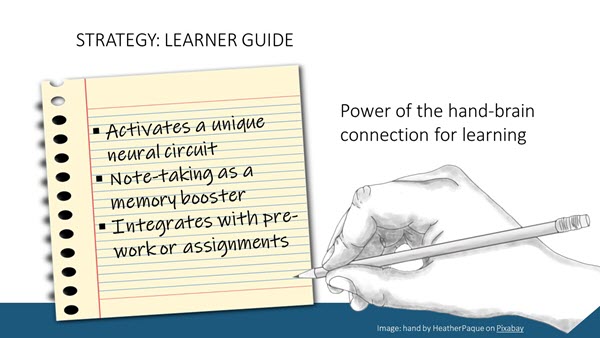Delivering Engaging Online Learning: Enlivening the Virtual Environment
This article is part of the Delivering Engaging Online Learning series on strategies for cultivating dynamic, engaging online virtual learning experiences. Libraries of all types—K-12, public, university, and more—are exploring various forms of online engagement with their communities. For many, the newly expanded scale of virtual programming can present a significant learning curve for all involved. If thoughtfully prepared and delivered, however, virtual learning can effectively facilitate learning, peer sharing, and community building.
Part II: Enlivening the Virtual Environment

Part I in this series offered strategies on how to prepare participants, presenters, and producers for successful webinar engagement. In Part II, "Enlivening the virtual environment," we’ll discuss how to create a dynamic virtual learning space that encourages active participation and connection.
Create the Whole Environment
When we walk into a school to take a class or into a conference center to attend a meeting, we are taking in every part of the physical surroundings, leaving an impression on our perception of the experience. In the virtual world, there is a tendency to separate experiences into discreet parts: the webinar experience doesn’t start until the appointed time and it lasts for one hour; the multi-week class is only about the live sessions, with anything else being just added-on stuff.
Given how much time we are spending online, it’s time to start thinking about the virtual learning environment as an integrated experience that builds social connection as much as it advances skill or knowledge. Too often, we think of a live-online event as the singular learning opportunity. Instead, we can be more intentional about creating a unified, multi-faceted environment that links asynchronous, or self-directed features, with live-online events and builds community across both spaces.
Be Welcoming
First and foremost, be welcoming. The virtual environment can be very disorienting. Whether it’s asynchronous or live-online, the visual and physical cues that steer us in the real world are absent. The tactics for welcoming people virtually are different, but they can go a long way to making participants feel positive about the learning adventure ahead of them.
Asynchronous space: The amazing Priya Parker (The Art of Gathering) tells us that a gathering (event) starts as soon as the invitations or announcements are sent out. The first contact a learner has when they register for a webinar or a class is asynchronous. Parker advises us to be intentional about this first opportunity to make people feel welcome. Is the confirmation message they receive clear and friendly? Will learners know where they need to be, what’s expected of them, and what they might need to prepare? For longer duration learning events, consider setting up a “learning community”–a virtual locus where participants know they can find each other and everything related to their learning experience.
Live-online space: Have you ever logged into a webinar and felt like you were in an empty room? There’s no sign of a presenter or other participants and a blank screen until the exact start time. You might wonder: Am I in the right place? Is there anybody else here? Did something go wrong with tech? One easy solution is to have a welcome screen that greets participants as they log in before the webinar begins so they know they are in the right place, and a voice on the line helps them confirm their audio is working.
Going further, in a physical meeting space, there is an inherent formal separation between speaker and audience and anonymity among participants. Rather than try to replicate those separations in a virtual space, break them down as much as possible:
- Show the participant panel to let attendees know that there are others attending in the virtual room, maybe even names they recognize.
- Open chat and make it available to everyone (not just presenters) to really boost the liveliness of the online room. Sideline chat is a vibrant way to encourage learners to actively participate in an experience and not just passively listen. They can share ideas, links, and pose and answer questions in real time without having to interrupt the programming.
- Encourage pre-session banter. Sharing weather reports across participants’ locations may seem trivial, but it fosters a sense of connection and builds comfort with exchanging thoughts and ideas spontaneously as the session proceeds.
Add Visual Richness
Virtual does not have to be synonymous with “drab.” The screen interface may be two-dimensional and low resolution, but it can still be enlivened with design, composition, and color.
Asynchronous space: The learning community is the main landing place that learners return to throughout a course, and it doesn’t have to be dull and colorless. Different tools have different features; WebJunction uses the learning management system Moodle to create and manage learning communities. Others have made use of free tools such as those found in the Google Suite. As you build your community, thoughtful layout of the information will help learners easily grasp what they need to do and when. Create clear divisions between lessons or events, with differences in font size and weight to demarcate the content (e.g., use of headings, bulleted lists, and icons to denote resource types). Don’t be afraid to insert white space to relax the eye and add to the clear divisions. And add colorful images to alleviate the text-density.
Live-online space: Most presenters are now aware of the “death by PowerPoint” syndrome and have relieved the world from text-heavy and over-bulleted slides. Let’s keep this trend going, while finding that balance between enough information on the screen to inform and enough visual stimulation to avoid glazed eyes. It’s not a prescription to have an image on every screen; it’s more about creating a cohesive and rich visual experience to augment the content. When you’re creating your PowerPoint deck, switch periodically to the slide sorter view where you can see how the colors and shapes coordinate (or not) across all the slides. Play with contrasts—very big to very small text or shapes, colors contrasted with each other or with black/gray—and let your imagination lead you. Consider including beautiful photographs of nature as visual interludes to rest the eyes and calm the spirit in these stressful times of online overload. Unsplash is a good free source for this, or explore other image source collections.
Foster Engagement with the Material
With less supervision and reduced immediacy in online learning, it can be harder for participants to stay engaged, especially when working asynchronously. To some extent, successful engagement depends on the nature of the individual learner. However, there are things you can do to support everyone as much as possible.
Asynchronous space: The learning community mentioned earlier is not just for welcoming participants. It is the whole learning environment for courses, workshops, or events of extended duration. The learning community can provide continuity and social connection, while assuring that directions are clear and the learning resources are readily available and cohesive.
The learning community may provide:
- Suggestions for successful online learning, such as reserving learning time on work calendars and letting others know to not disturb your learning during these times
- Log-in information for live events
- Dedicated discussion forum for introductions: “tell us about yourself”
- A learner guide (see examples) to define the full trajectory of learning, connect the asynchronous and live-online content, and allow the learner to see the full picture of how everything ties together; many learners still like to print out a hard copy for hand-written notes and for tracking their progress. A learner guide also can be an important resource for those who are learning together as a group by providing a shared language for discussions and ways to apply that learning in next steps together.
- Collection of resources—either linked or embedded—such as online articles, videos, or podcasts
- Discussion forums that foster conversation on key topics
- Assignments and activities to apply learning
Live-online space: Most online meeting platforms, including Webex, Zoom and Adobe Connect, offer a variety of tools to engage audiences—use them! When participants can perform actions in the real-time online interface, they are more likely to feel they are sharing in a group learning experience, which results in more engagement and more social reinforcement of learning.
- Polls are useful for collecting aggregate data on who’s in the room, what knowledge they bring to the event, etc. Share the results for everyone to see.
- Annotation tools can be a lot of fun because they allow people to mark directly on a presentation screen. You create a slide with the checklist, continuum, image, or whatever your imagination conjures up, and watch the audience get activated as they mark their choices colorfully on the screen. You know they’re not multitasking at that moment.
- Use chat to facilitate discussions. Pose a rich open-ended question and ask participants to enter their responses in chat.
- Use breakout rooms for smaller discussion groups to help people who may feel intimidated or outnumbered in a large group to feel more comfortable and be more likely to speak up. Keep breakout room numbers to a maximum 4-5 people per group. If you will hold multiple breakout sessions, try mixing up the groups to encourage people to interact with different participants.
- Collaborative documents, where a group can add notes and respond to question prompts simultaneously in real time, add a different dynamic to group participation. Post a link to an online editable document, such as a Google Doc, and let learners type in their ideas and answers. This shared document creation can continue in the asynchronous learning community.
This content was originally delivered as a virtual presentation to US school library staff and administrators as part of the Institute of Museum and Library Services Accelerating Promising Practices for Small Libraries (APP) Initiative. For this project, WebJunction is mentoring a cohort of 10 small, rural US school libraries as they redesign their school libraries for 21st century learning, advancing staff skills, strengthening partnerships with stakeholders, and enhancing programs and services that will prepare their students for success. APP Transforming School Library Practice is made possible by support from OCLC and the Institute of Museum and Library Services (project number LG-00-19-0289-19). Learn more at oc.lc/school-library-mentor.

